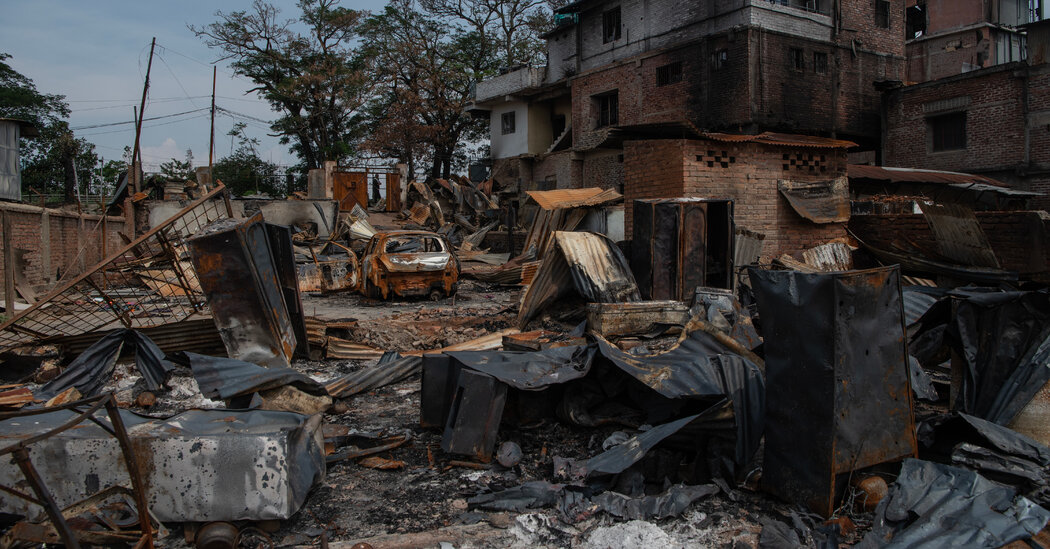Where Modi’s B.J.P. Lost Support In India’s Election
Narendra Modi set a lofty goal for an election he hoped would send him to a legacy-defining third term as prime minister: winning a majority so staggering that his party would cement itself as the only plausible option to lead India for years to come.
To do that, his Bharatiya Janata Party, or B.J.P., aimed to expand on its deep support across the so-called cow belt in India’s populous north, while also making significant inroads in the country’s south, which has been more resistant to the party’s Hindu-nationalist agenda.
But little went to plan for Mr. Modi when the election results arrived on Tuesday. His party did not just fall well short of its goal of winning more than 400 of the 543 parliamentary seats. It took such a steep dive — losing more than 60 seats — that it no longer had a majority in Parliament.
To stay in office, the powerful Mr. Modi is now forced to do something that does not come naturally to him: work with others, in a political coalition. That alliance, known as the National Democratic Alliance, or N.D.A., will face a reinvigorated political opposition, led by the Congress party, that significantly improved its performance since the previous election, in 2019.
Modi’s N.D.A. alliance lost swaths of territory in this election
The B.J.P.’s losses were sprinkled around the country, from Maharashtra in the west to West Bengal in the east. But Mr. Modi’s biggest setback came where it was least expected: the northern belt where his party was well entrenched and its Hindu-nationalist ideology had strong backing.
In Uttar Pradesh, India’s largest state, with a population of 240 million, the B.J.P. won just 33 seats, down from 62 in the previous election. It was in this state that Mr. Modi in January inaugurated the lavish Ram temple, seen as one of his biggest offerings to his Hindu support base. But the B.J.P.’s chest-thumping over its Hindu-first policies turned off many lower-caste voters more concerned with issues like unemployment, inflation and social justice.
One of the biggest surprises was in the city of Ayodhya, the site of the Ram temple. The B.J.P. lost the seat that includes the city and its neighboring districts.
In the important state of Maharashtra, home to India’s business and entertainment capital, Mumbai, the B.J.P. won only nine seats, down from 23 in the last election. The party’s coalition partners suffered even worse losses.
The vote was seen as a verdict on the B.J.P.’s heavy-handed ways of reshaping the state’s political map. The B.J.P. had used pressure by government agencies and enticements of cash and power to split both of the state’s two largest parties. A faction within each of the two split parties then aligned with the B.J.P. The move backfired, however: In what was viewed as a sympathy vote, the original factions from the two parties outdid the B.J.P. allies by large margins.
The B.J.P. did have some good news: It continued to expand its support in the south, where it has struggled to establish a lasting foothold. It won a seat for the first time in the left-dominated state of Kerala and several seats in the state of Telangana.
N.D.A. alliance gained territory in the east and south
The party’s most impressive gains came in the state of Odisha in the east. That state is part of the “tribal belt,” which weaves across central India and is the only part of the country where the B.J.P. has unified support. Its relatively poor communities have been skillfully targeted by the B.J.P.’s Hindu-first politics and welfare benefits.
But the party’s progress in eastern and southern India was far from enough to make up for its losses in the north. Now, with Mr. Modi deprived of the landslide victory he had sought, the country will see how he responds. Some of the strains in India’s democracy might be mended as Mr. Modi is forced to consult with coalition partners who could restrain his more authoritarian tendencies. Or he could crack down more fiercely than ever, worried about losing more ground to a revived opposition.


